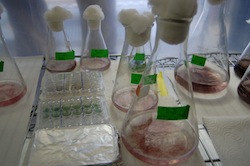The Age of Electric Cars is finally coming. Despite a stutter back in the late 90s when electric vehicle (EV) development came and went spurred by the passage and elimination of California zero emission policies, electric vehicles have come back. And if author James Billmaier is correct, in his book “JOLT! The Impending Dominance of the Electric Car,” they are not only here to stay, but they will completely transform driving as we know it.
While America has the means to be the leader in electric vehicle development and manufacturing, Billmaier notes that this lead is under threat, especially by China. He writes, “Today the United States faces a new threat to its national security. This time the threat is one of economic dominance, and it comes in the form of the electric car.”
 He continues, “The EV industry us certain to become a technological juggernaut. Any society that masters it will enjoy an economic bonanza and enormous world power. For our own security, that society needs to be us.”
He continues, “The EV industry us certain to become a technological juggernaut. Any society that masters it will enjoy an economic bonanza and enormous world power. For our own security, that society needs to be us.”
While the major hurdles to EV development have been or or close to being overcome, there are still challenges that need to be addressed. Ballmaier notes that these include lack of substantial private and federal investments to develop the industry and manufacture the cars and components in the states, as well as battery development and charging infrastructure. Cost is a major factor, and as an example, the Chevy Volt, that is launching in 2011, will cost more than $40K. In addition, the EVs range is still a concern among most drivers – true EVs are just getting to the 100 mile range.
However, Ballmaier explains that as EVs come of age and consumers purchase them in droves, battery costs will come down, range will go up and the cars will become even less expensive and more attractive.
In the beginning of the book, Ballmaier gives an overview of the industry, that is followed by interviews with some of the major players. The book concludes with his take on the future of EVs in America. While this was interesting, what I felt was missing was a real examination of some of the drawbacks of EVs including the precious metals needed for the batteries, battery replacement and recycling, the needs of the electrical grid and the move to the smart grid, and the true impacts of plugging into a dirty grid. In addition, I felt he missed an opportunity to talk more about hybrids (PHEV), electric vehicles with a gas backup that can run on E85. If his vision comes true, it won’t happen without a transmission that will require hybrids to travel long distances.
In the end, Ballmaier outlines his “JOLT! Program for America” which calls for 100 million plug-in cars on American roads by the end of the decade and asks for America to take charge.



 Brazilian President Luiz Inacio Lula da Silva inaugurated construction on the project Tuesday by soldering the first pipe joint of the 202-kilometer (126-mile) pipeline. “I managed to sell the idea that humanizing the work in the sugarcane fields was important for selling ethanol to other countries,” the president said.
Brazilian President Luiz Inacio Lula da Silva inaugurated construction on the project Tuesday by soldering the first pipe joint of the 202-kilometer (126-mile) pipeline. “I managed to sell the idea that humanizing the work in the sugarcane fields was important for selling ethanol to other countries,” the president said.
 I’m just a farmer,
I’m just a farmer,



